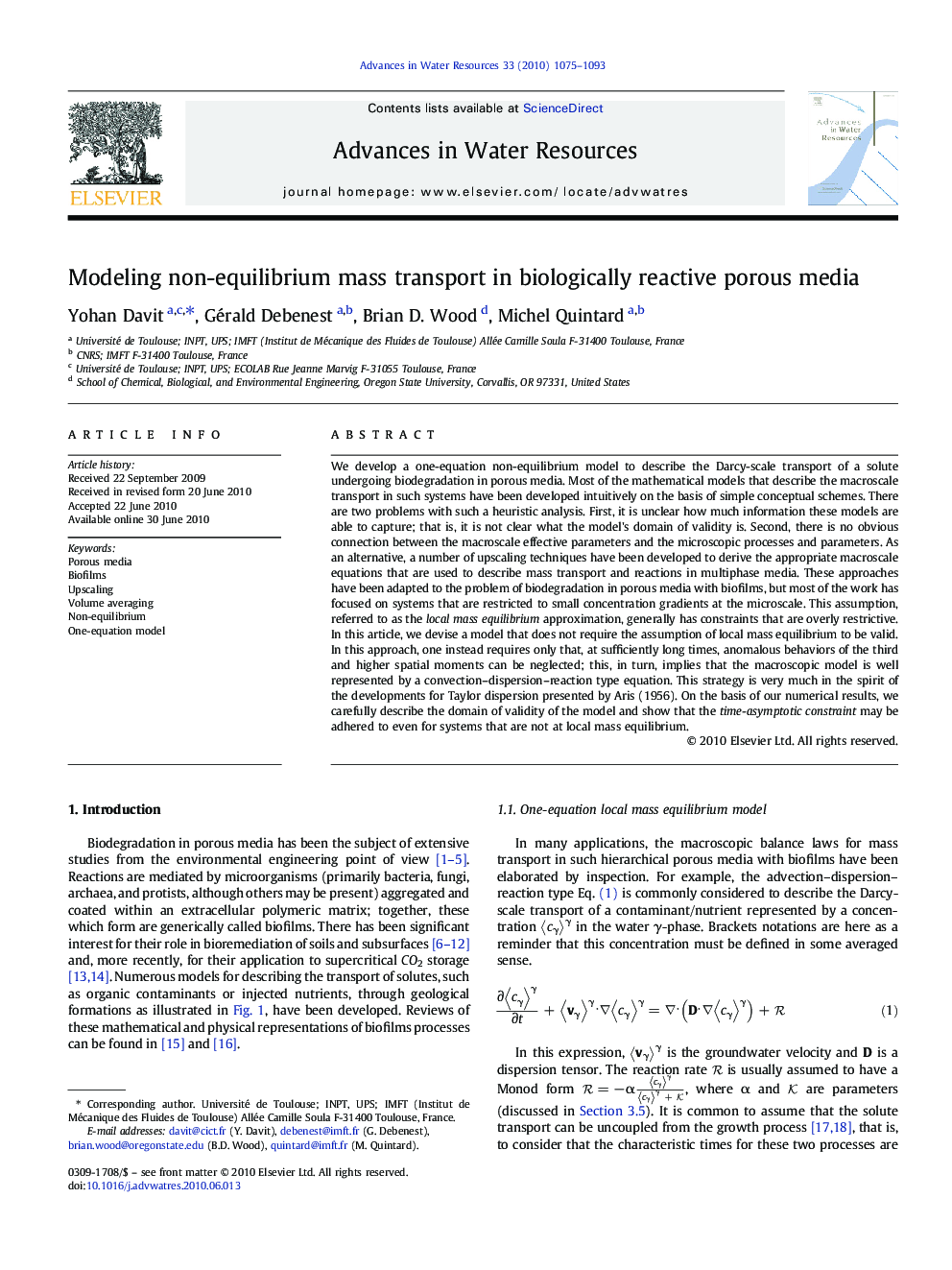| Article ID | Journal | Published Year | Pages | File Type |
|---|---|---|---|---|
| 4526389 | Advances in Water Resources | 2010 | 19 Pages |
We develop a one-equation non-equilibrium model to describe the Darcy-scale transport of a solute undergoing biodegradation in porous media. Most of the mathematical models that describe the macroscale transport in such systems have been developed intuitively on the basis of simple conceptual schemes. There are two problems with such a heuristic analysis. First, it is unclear how much information these models are able to capture; that is, it is not clear what the model's domain of validity is. Second, there is no obvious connection between the macroscale effective parameters and the microscopic processes and parameters. As an alternative, a number of upscaling techniques have been developed to derive the appropriate macroscale equations that are used to describe mass transport and reactions in multiphase media. These approaches have been adapted to the problem of biodegradation in porous media with biofilms, but most of the work has focused on systems that are restricted to small concentration gradients at the microscale. This assumption, referred to as the local mass equilibrium approximation, generally has constraints that are overly restrictive. In this article, we devise a model that does not require the assumption of local mass equilibrium to be valid. In this approach, one instead requires only that, at sufficiently long times, anomalous behaviors of the third and higher spatial moments can be neglected; this, in turn, implies that the macroscopic model is well represented by a convection–dispersion–reaction type equation. This strategy is very much in the spirit of the developments for Taylor dispersion presented by Aris (1956). On the basis of our numerical results, we carefully describe the domain of validity of the model and show that the time-asymptotic constraint may be adhered to even for systems that are not at local mass equilibrium.
